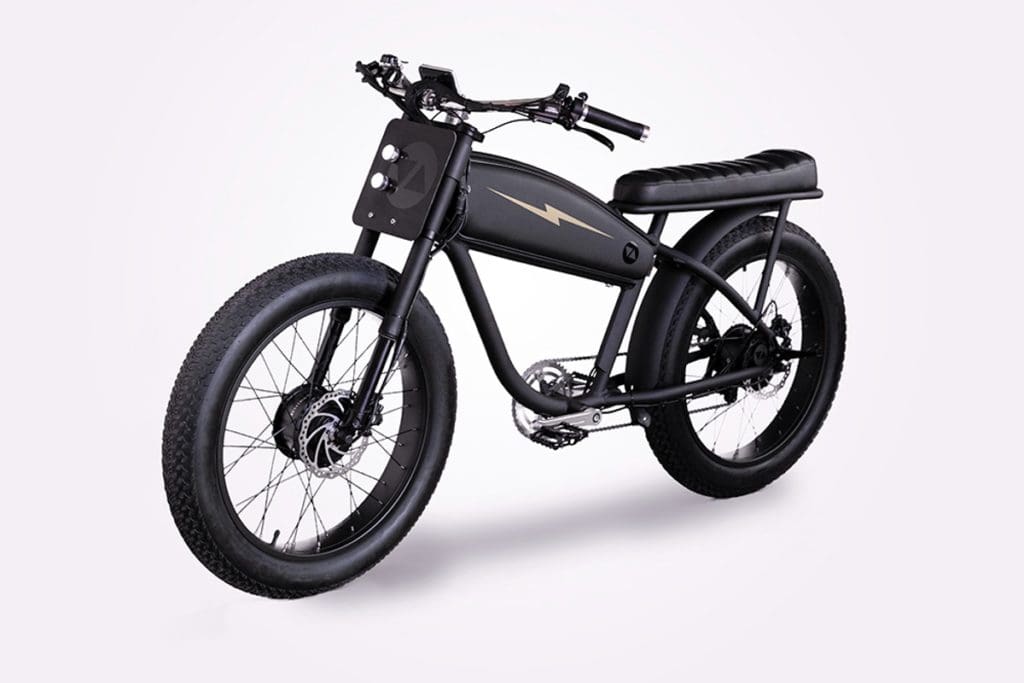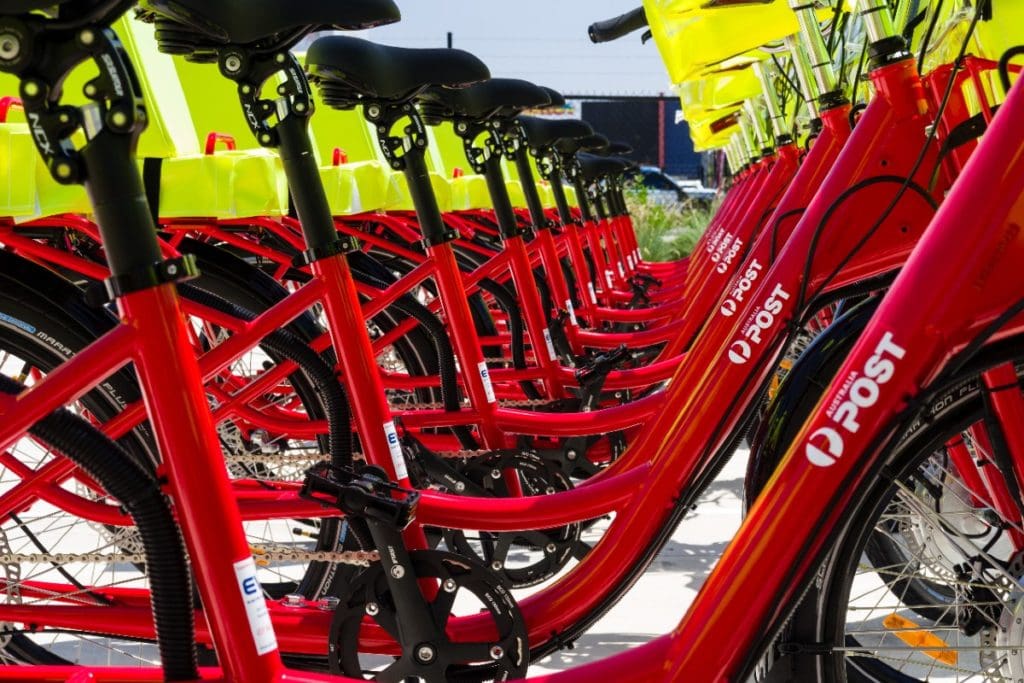Productivity Commission Calls for Consideration of Higher e-Bike Speeds

Sydney, NSW
A NSW Productivity Commission report has advocated a review of e-bike speeds, current power limits for cargo bikes and the State’s ban on electric scooters, saying relaxing these regulations could bring substantial benefits.
The Regulating Emerging Technologies report, released in November, focuses on personal mobility devices, e-bikes and drones, and says they “have the potential to transform the movement of people and goods” if better, “forward-looking” regulation is in place.
“Australian governments should review e-bike regulation to support the use of faster e-bikes while managing safety risks,” the report says.
“Many international jurisdictions permit the use of e-bikes with faster maximum speeds and power outputs. Expanding the range of e-bikes available could encourage more people to use e-bikes, and to use them more regularly and for greater distances.
“Just 5% of NSW bike rides were estimated to be undertaken by e-bikes in 2021, whereas 40 to 50% of bikes sold in Germany and Netherlands are e-bikes.”
According to the commission, a national review of e-bike regulations would deliver the greatest benefits because it would encourage national consistency, with Commonwealth regulations on what types of devices may be imported into Australia and State-based regulation of what devices were permitted on roads.
“Adjusting e-bike regulation could also pave the way for less congestion on our roads, cheaper deliveries by our booming e-commerce sector, and lower greenhouse gas emissions,” the commission states.
Short-term measures
It recommends two short-term measures:
• a modest increase in the maximum speed and/or power output for private use e-bikes in public areas
• regulating the use of e-bikes on private property to ensure they are ridden safely, regardless of location
“In the medium term, an option would be to regulate more powerful private-use e-bikes (such as speed pedelecs) in recognition of the heightened safety risks—either as their own class of e-bike or as part of a broader ‘moped’ class,” it suggests.
“This could involve consideration of: appropriate speed and power limits, registration and insurance requirements, licensing of riders, age restrictions, which areas (eg. cycle paths, roads) they can be used.
“Further research would need to be undertaken into the benefits and costs of each option. This could draw on the experience of overseas jurisdictions that have already modified their laws for e-bikes.
“Restrictions on the speed of e-bikes are not keeping pace with increased consumer demand for faster e-bikes in NSW and Australia. The online availability of high-speed e-bikes and conversion kits has created growing safety concerns for riders and pedestrians in the absence of appropriate regulation.”
The Regulating Emerging Technologies report builds upon a Regulating Personal Mobility Devices (PMDs) study produced by the Centre for International Economics and released in April.
That analysis found an appropriate regulatory framework could enable uptake of PMDs of between 8 million trips and 10 million trips per year by 2041, compared to 600,000 trips per year if regulations remain at their current settings.
It claims improved regulation could also unlock up to $87 million in net economic benefits for NSW by 2041.
More Power for Commercial Cargo Bikes
The Regulating Emerging Technologies report says provision for more powerful cargo bikes should also be considered as part of its recommended national review, noting the same power limits apply for bikes used for commercial and private use.
“This power limit is limiting their potential to carry heavier loads at a time where e-commerce delivery is booming,” it observes.
“e-Cargo bikes can be up to 60% faster than vans for last-mile deliveries in urban areas, offering potential for significant cost savings given that over half of freight costs come from the last mile.”
The report highlights Australia Post’s fleet of 2,500 e-cargo bikes make more than 2.5 million deliveries of mail and small parcels to customers per day.
“The bikes offer a higher load capacity than postie motorcycles and there have been no serious accidents or deaths in the last decade,” it says.
“This is an area of rapid innovation, with new devices emerging. Starting the conversation about the right regulatory settings now will position us to benefit from future innovation.”

Industry self-determination
The report advocates “outcome-focused, tech-neutral regulation” that focuses on the desired objectives, such as high safety standards, rather than prescribing how these objectives are met.
It says that “leaves it open for businesses to decide the technology or business models to be used”.
“Regulations that are outcomes-focused and technology-neutral will help future-proof our regulatory systems and maximise innovation opportunities.
“Governments should be regularly scanning the horizon for new technologies and updating regulations to respond to the opportunities and risks posed.”
The report also calls for a revision of laws that restrict other PMDs to use on private property, potentially bringing NSW into line with other jurisdictions.
“A trial of personal mobility devices would help test and refine regulatory approaches while addressing safety risks,” it advocates.
“Governments should also embrace a culture of regulatory experimentation by not being afraid to implement regulatory trials and refine the rules based on these trials. A no-risk, no-reward mentality will be required if we are to continue benefitting from the innovation spirit that has delivered the high standards of living we enjoy today.”
This article was first published in our sister publication, Micromobility Report.
Join the Conversation:
Do you agree with the Productivity Commission’s recommendations?

As we all know, we can jump on just about any bike in the store and regularly exceed the 25km/h speed limit that is applied to e-bikes. The argument is that the 25km/h speed limit is for rider safety, yet there have been many people who have been safely riding above that speed for years.
The issue stemming from this speed restriction is when riding in traffic – the lower speed of e-bikes increases the danger for cyclists, as motorists take risks (to us, not to them) to get around someone travelling at 25km/h. When we are travelling at a similar speed it is easier to hold a spot in traffic, and that is why an increase in the speed limit to 40-45km/h will hopefully* prevent frustrated drivers from risking a cyclists safety on the road.
I imagine it might even help reduce the number of cars on the road, which is an important consideration in regards to reducing the effects of climate change.
* a) one can’t stop all idiotic behaviour, and b) most speed limits in our area in urban Sydney are 50km/h, dropping down to 40 for schools and some high pedestrian areas so hopefully that increase would be enough.
Thanks for your thoughts. Some good points. This Friday’s instalment of the Micromobility Report includes a story about campaigning to reduce traffic speeds in built up areas to 30kmh. Maybe the regulated speeds of e-bikes and cars can meet somewhere in the middle to achieve an optimum outcome for all.